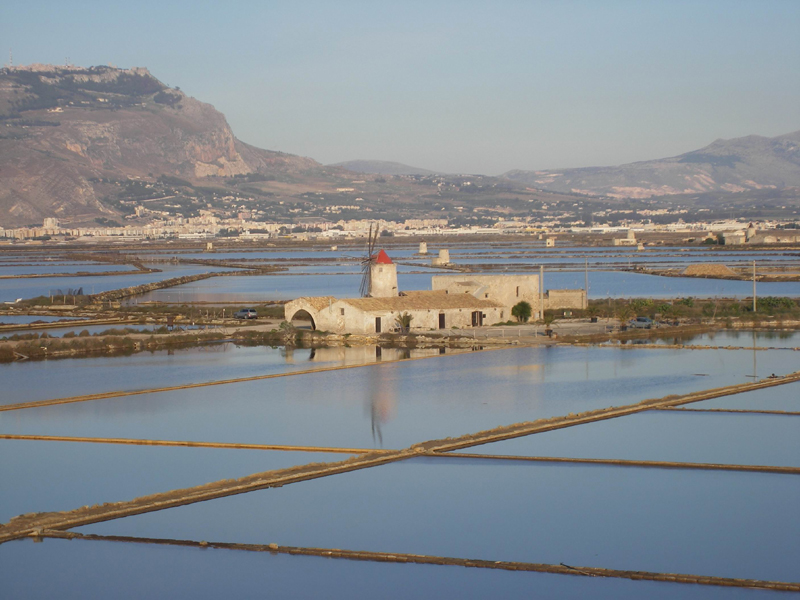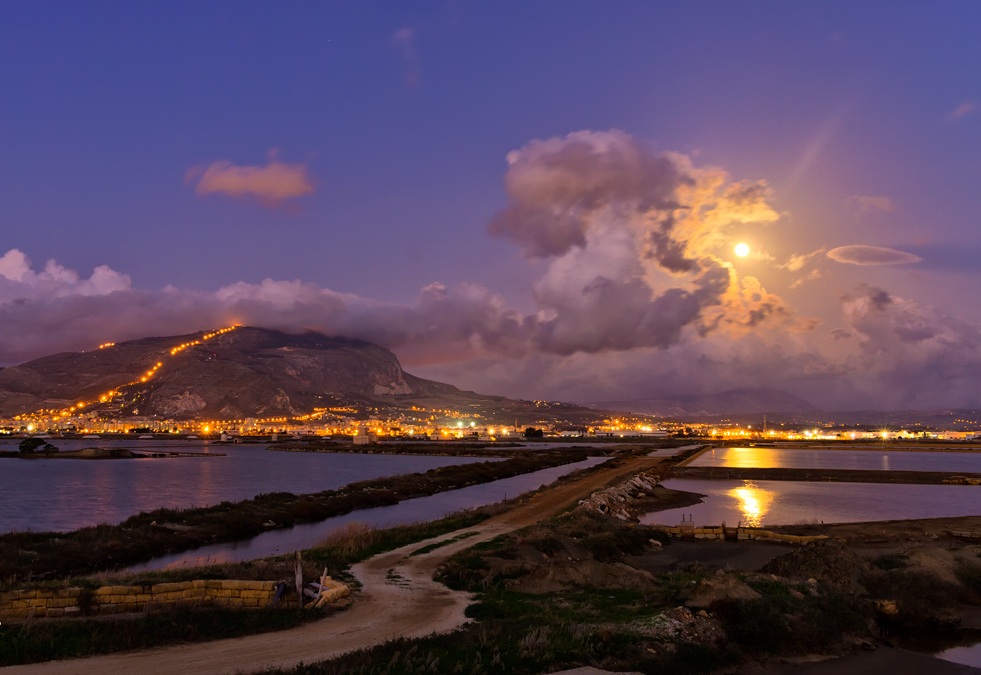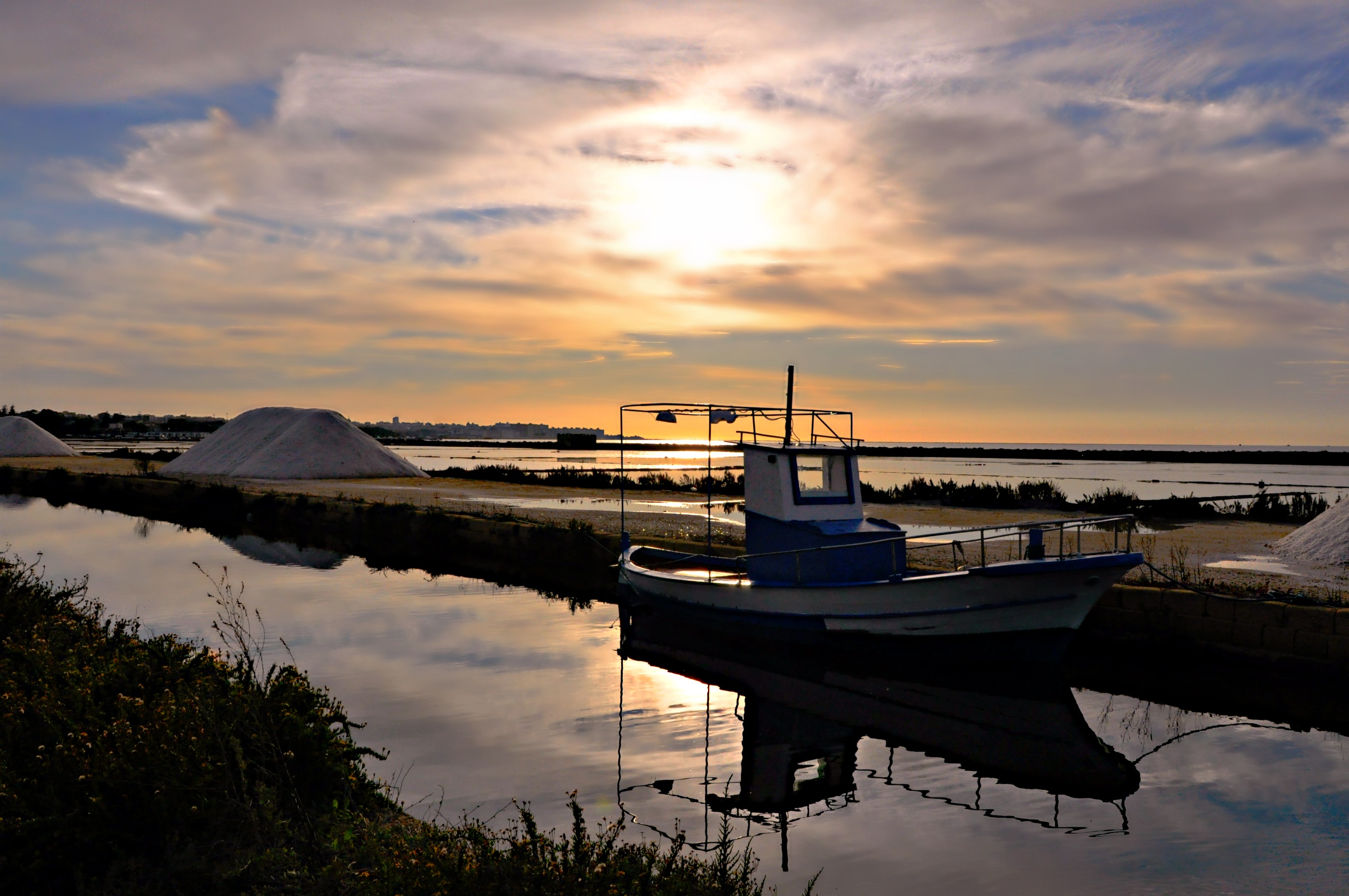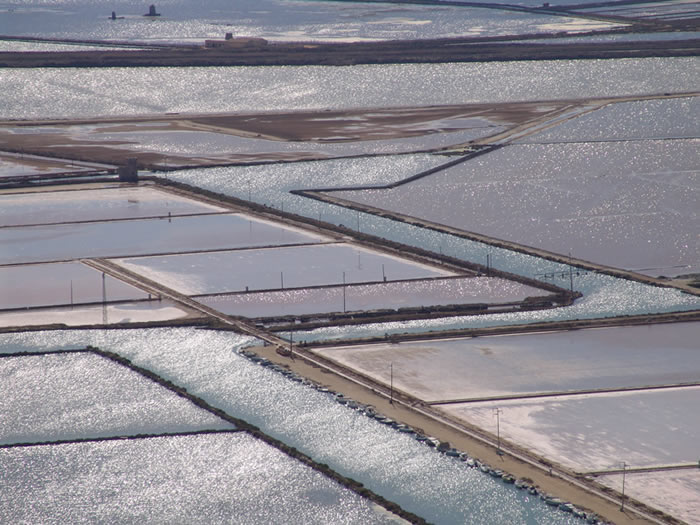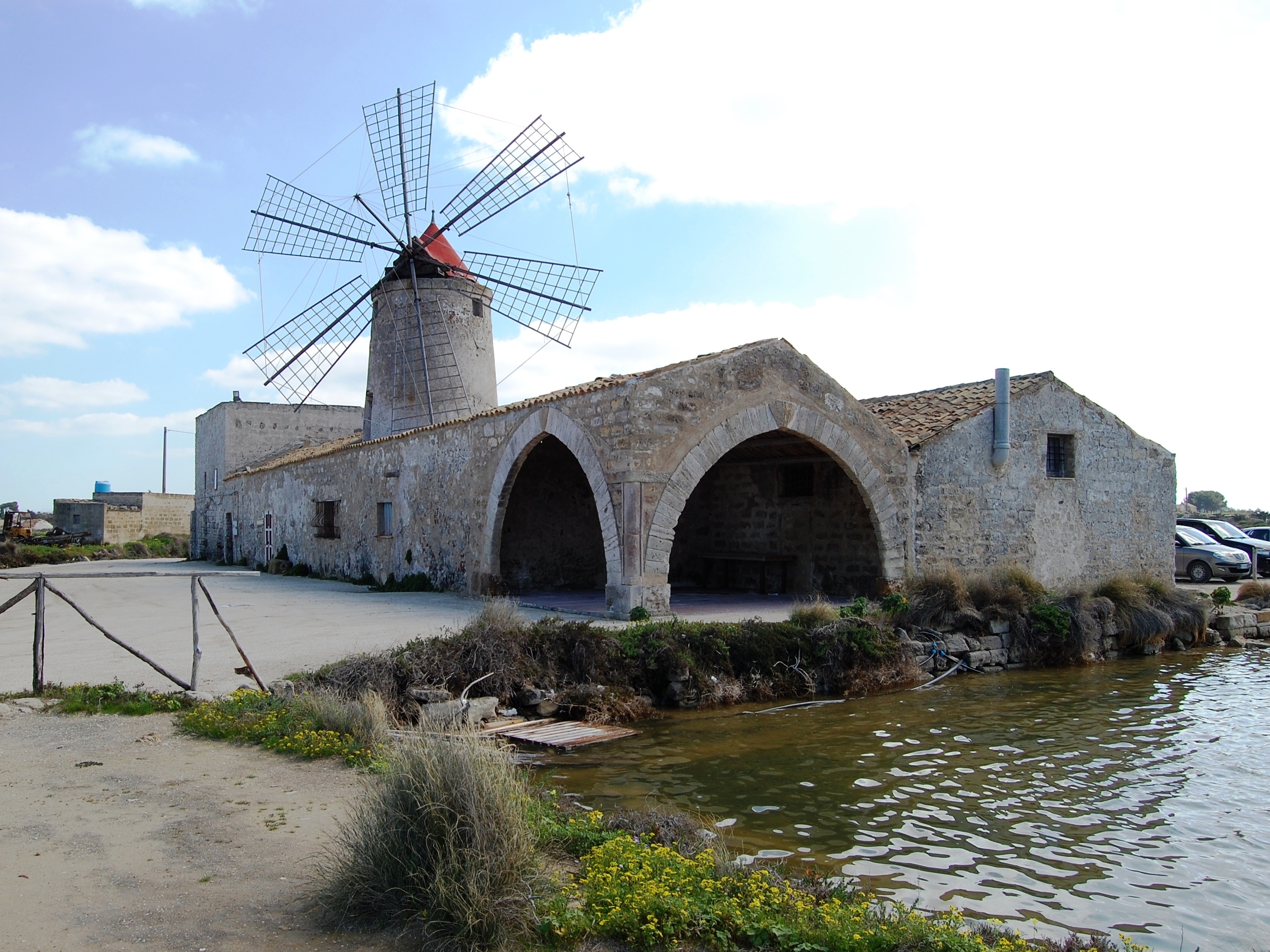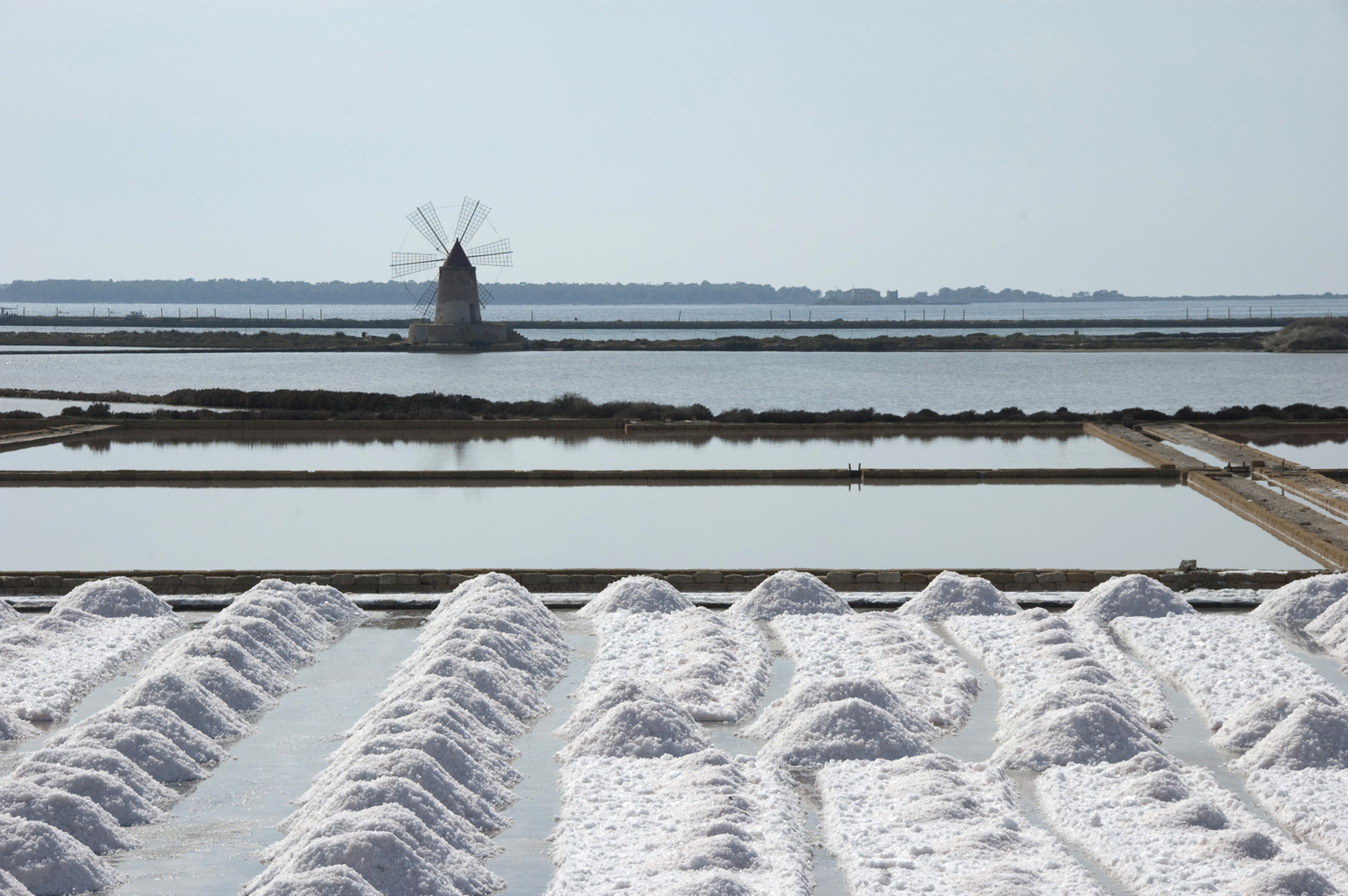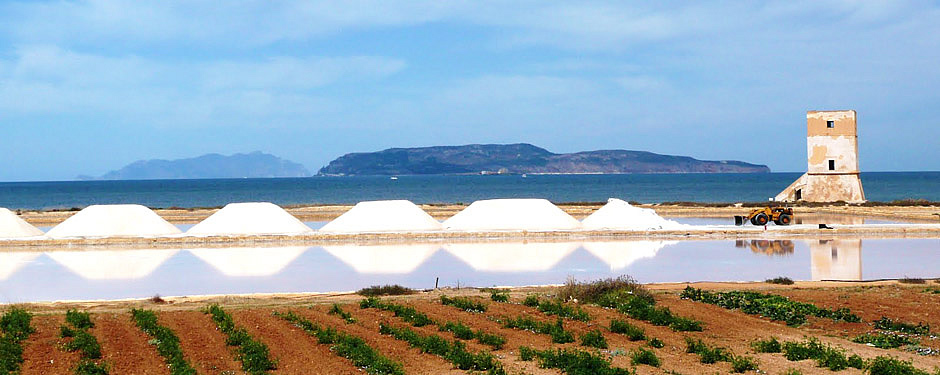
Trapani and Paceco Salt Pans
This post is also available in:
 Italiano (Italian)
Italiano (Italian)
An expanse of ponds that runs along the Mozia lagoon, near Trapani: those are the ancient salt pans of Trapani and Paceco. Probably established by the Phoenicians, they were described by an Arab geographer called Idris in 1154, who documented their presence during the Norman domination period.
A few decades earlier, Frederick of Swabia had, in fact, already established a state monopoly on the production of salt; nonetheless, under the following Aragon reign, those salt pans returned to private ownership. The Spaniards massively exploited the local salt production, and the port of Trapani became the most important in Europe for this very reason. Later on, the salt flats experienced a period of slight abandonment.
In 1995, the establishment of an Oriented Nature Reserve re-boosted the production of salt, obtaining several awards, including the official IGP recognition. In 2011, the salt pans were acknowledged as Italian Ramsar wetlands.
This reserve currently covers about 2.470 acres, also featuring rich and variegate flora and fauna.
FLORA AND FAUNA
Salt processing still takes place near the visitors’ paths within this reserve, while many migratory birds usually stop in this humid area: 208 different species have been recorded, including pied avocets Recurvirostra avosetta – the symbol of the reserve – pink flamingos (Phoenicopterus roseus), Eurasian spoonbills (Platalea leucorodia), and several members of the Anatidae family (ducks).
There are also numerous species of rare insects and some heteropterans (plant bugs) of the Miridaefamily. In some tanks, there are many Mediterranean killifish (Aphanius fasciatus), a species currently threatened of extinction.
Several herbaceous and shrubby species grow in the reserve, having adapted to the hostile habitat of the brackish environment, such as Halocnemum strobilaceum, Halopeplis amplexicaulis, Marigold, and Limbarda crithmoides, as well as endemisms like Myriolepis ferulacea, and Euphorbia pithyusa.
Worth visiting nearby:
The salt museum, the island of Mozia, Colombaia castle and Erice.
Worth tasting:
Trapani-style Cous Cous
Events:
The couscous fest at the end of September.
This post is also available in:
 Italiano (Italian)
Italiano (Italian)
Contatti
Via Garibaldi 138 - Paceco(TP)
0923 867700
salineditrapani@wwf.it
http://www.wwfsalineditrapani.it/
Altre info
Gratuito
Visite guidate su prenotazione tutti i giorni nel periodo estivo tranne la domenica (ore 10.00, ore 11.00) dal centro Visite Mulino Maria Stella.
